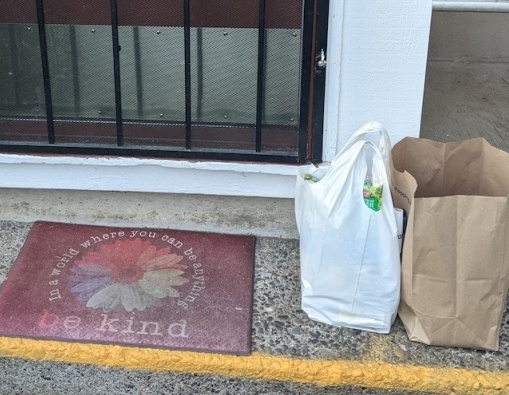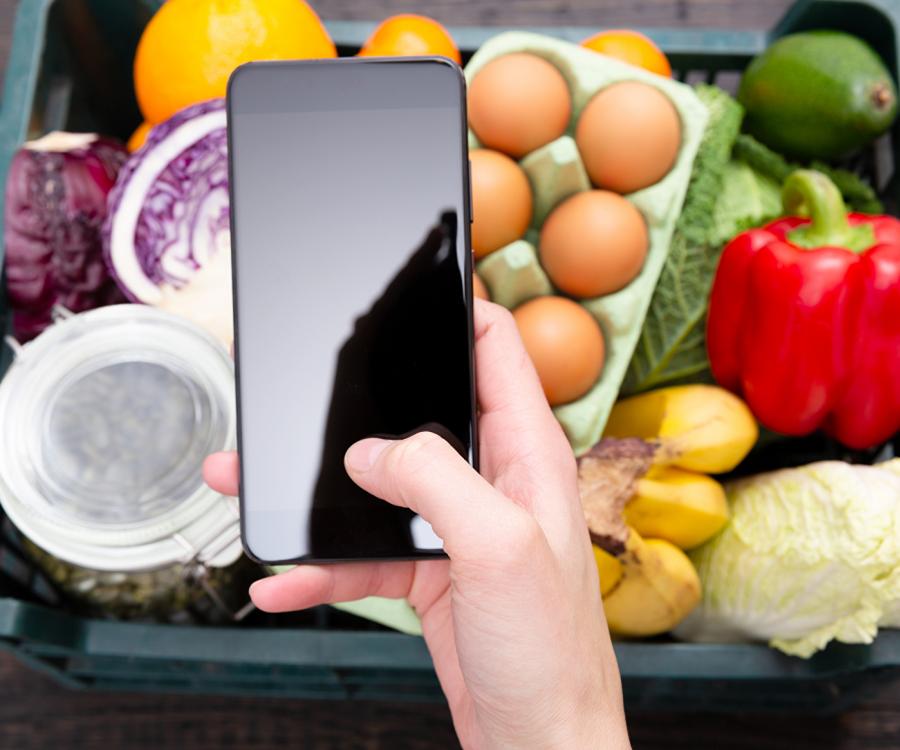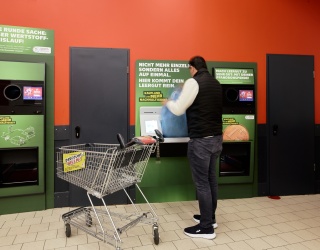When the COVID-19 pandemic first swept across North America and led to emergency shutdowns during the spring of 2020, the way people acquired food and household necessities was dramatically impacted. As stay-at-home orders minimized personal travel, transit services were reduced and many stores and restaurants either closed or modified their operations.

Some of the gaps were filled by online retailers and delivery services. However, access to goods and services varied substantially depending on people's age, income level, and ability.
A new multi-university study funded by the National Institute for Transportation and Communities (NITC), the U.S. DOT-funded university transportation headquartered at Portland State University, and the National Science Foundation (NSF) captured how households responded as local, state, and federal governments imposed and lifted restrictions, brick-and-mortar establishments closed and reopened, and e-commerce and delivery services adjusted to the changing conditions.
The findings of this research are critical for emergency planning, but also for understanding the ever-changing mechanisms used to access retail and service opportunities (whether in person or online). The research identifies opportunities for future interventions to remedy barriers to accessing food, which will remain relevant even after the pandemic recovery.
The research
The project was led by Kelly Clifton of Portland State University (now a professor at the University of British Columbia's School of Community and Regional Planning), Kristina Currans of the University of Arizona, and Amanda Howell and Rebecca Lewis of the University of Oregon. The research team also included Paula Carder, director of PSU's Institute on Aging, and graduate students Max Nonnamaker and Gabriella Abou-Zeid. Nonnamaker used information from the focus groups to complete his masters degree in public health. Abou-Zeid, now a transportation data specialist at ICF, wrote her master's thesis on the adoption and use of e-grocery shopping in the context of the COVID-19 pandemic, which she presented at TRB 2022. Learn more: PSU Graduate Gabby Abou-Zeid Explores Implications of E-Grocery Shopping during the COVID-19 Pandemic.
The researchers used a mixed-methods approach to evaluate the extent to which people modified their shopping behavior during the COVID-19 crisis and following recovery. They administered four waves of cross-sectional online surveys to households in Arizona, Florida, Michigan, Oregon, and Washington, from September 2020 through November 2021. These surveys were designed to understand:
- How have people accessed essential goods during the pandemic crisis and recovery periods?
- What barriers have certain subgroups faced in accessing essential goods?
- And to what extent do/can online platforms help meet demand?
The four waves of surveys in five states produced a unique and rich dataset documenting the grocery shopping behaviors, preferences, and attitudes of consumers during important phases of the pandemic, including: the initial economic reopening in 2020; the loosening and tightening of restrictions through fall and winter of 2020; the emergence of the vaccine in January 2021; and the surge of cases associated with the Delta variant in summer and fall of 2021. Data from the surveys have been made publicly available for future use by researchers. Access the dataset here: Data from "Consumer Responses to Household Provisioning During COVID-19 Crisis" and "Recovery and Accessing Opportunities for Household Provisioning Post-COVID-19.
To complement the survey data, the researchers conducted interviews and focus groups with a subset of the population – older adults, and friends and family members who had helped them order online – to learn how they adjusted to the conditions of COVID19 in their grocery shopping. Researchers chose to focus on older adults because they are more likely to experience mobility barriers, COVID vulnerabilities, and lack of digital resources or knowledge.
Key findings
Findings indicate that in-store food shopping is a mainstay for household provisioning and will likely remain so into the future. Yet, during the pandemic, many households experimented with online shopping and reported a high level of satisfaction with it. Even as people returned to stores, online shopping did not drop off and instead showed a gradual increase over the four waves of the survey. Survey respondents predicted that they will continue to use online shopping at the same or higher rate in the future.
Shoppers mainly drove to retailers to acquire food, but there were changes in mode shares over the course of the pandemic. Walking, cycling, transit, and ridehailing all saw increases in usage over the four waves of the survey.
The biggest limitations to the future growth of e-commerce in the food sector are the inability to inspect items for quality, and delivery fees. While some barriers to online grocery shopping persist, it is clear that it can and does fill important gaps for people. It is a valued option in situations where people have mobility limitations, are quarantining or are sick with COVID, facing time pressures, or stores are not easily accessible.
When asked about barriers to food access, more people cited mobility barriers – such as not owning a vehicle or having a mobility-limiting condition – than technological ones, such as access to smartphones or broadband internet. The focus groups with older adults provided more context. Most respondents rated their digital acumen as high, and they were mostly confident in their technology skills. Being on fixed incomes, their desire to minimize costs, utilize coupons, and shop sales reinforced their preferences for in-store shopping.
"Online ordering can help overcome mobility barriers. However, both our quantitative and qualitative data results point to the idea that many people still want to be able to inspect food items for quality and freshness, and this isn’t something that is going to be easily solved by technology. I think this points to the continued importance of making sure we’re filling mobility gaps and using all the tools available in the practitioner toolbox to incentivize local stores in every neighborhood. These don’t have to be large grocers, but just places that offer a variety of fresh foods which can supplement the dry/bulk items and other household items that people are more comfortable ordering online. No doubt this is easier said than done, but I think it’s important to always come back to this idea that technology is a tool but not a solution unto itself," said Howell.
Implications for practitioners
These results have implications for planning for food access into the future, including widespread emergency events such as the pandemic, as well as changes in circumstances that individuals may experience.
"Practitioners – whether they work in public, private, or advocacy institutions – require evidence and data to both identify opportunities to tailor their services to those most in need and to support funding requests that enable them to provide new or different services. One of the biggest contributions of this work is the data itself, capturing behavior across a multitude of built and social environments over the course of one year," said Currans.
Understanding the impacts of the pandemic on food access and the adoption and use of e-commerce platforms has benefits to transportation planners and urban planners (the results can likely inform the provision of parking, land use, road capacity, and internet connectivity), as well as public health professionals. The popularity of ordering online but picking up in-store indicates that people value the time savings but do not want to pay delivery fees. Should this increase in the future, the amount of parking needed at these stores may be reduced, as there may be shorter dwell times and higher turnover.
The research offers insights about who lacks access to food resources, who is adopting technology, how new behaviors intersect with old ones, and the potential "stickiness" of these behaviors as we recover from the pandemic.





